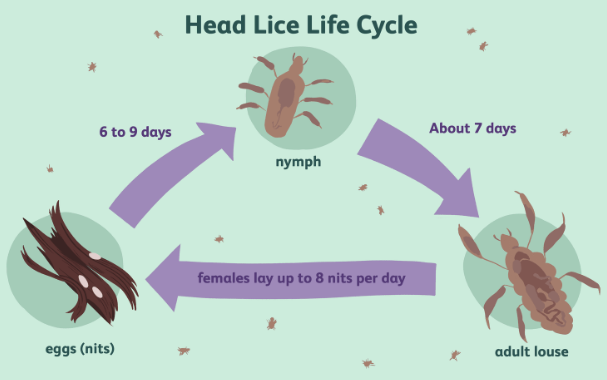Kids Hair Lice: Causes, Symptoms, Treatment, and Prevention

Head lice are tiny parasitic insects that can infest the scalp and hair. They are common in children, especially school-aged kids, and highly contagious.
Head lice are not a sign of poor hygiene; anyone can get them. They can be itchy and uncomfortable and also be challenging to get rid of.
This article will discuss the causes, symptoms, treatment, and prevention of head lice in children.
Causes of Kid’s Hair Lice
Head lice spread through direct head-to-head contact. They can also spread indirectly by sharing personal items like combs, hats, headphones, and brushes.
Head lice cannot jump or fly and can only crawl from one head to another. They need human blood to survive and can’t live on pets or furniture.
Do pets transfer lice to kids?
Head lice are species-specific, meaning they can only infest humans and not survive on pets or other animals. Therefore, pets cannot transfer head lice to children or other humans.
However, it is still possible for pets to have their type of lice, such as dog lice or cat lice. These lice are different from human head lice and cannot infest humans.
So, while pets cannot transmit head lice to humans, keeping pets free of lice and other parasites for their health and well-being is still essential.
If you suspect your child has head lice, it is vital to check all family members, including pets, for any signs of infestation. This can help to prevent the spread of head lice within the family and ensure that all necessary steps are taken to treat the infestation.
Symptoms of Kid’s Hair Lice
The most common symptom of head lice is itching. An allergic reaction to the lice bites causes itching. The itching can be intense and may worsen when the lice are most active at night. Other symptoms may include:
- Tickling feeling on the scalp
- Small red bumps on the scalp, neck, and shoulders
- Tiny white or yellowish-brown eggs (nits) on hair strands close to the scalp
- Adult lice on the scalp or hair
Can head lice survive on pillows
Head lice can survive on pillows for a short period, but they are unlikely to infest someone from the pillow alone. Lice require a human host to feed on every few hours to survive, so they will quickly die if they are not on a human scalp.
However, it is still possible for lice to be present on pillows or other bedding if someone with a lice infestation has recently used them.
This is why washing all bedding and personal items that may have come into contact with lice in hot water is essential, and dry them in a hot dryer for at least 20 minutes.
It is also a good idea to vacuum areas where infested individuals have spent time, including furniture, carpeting, and car seats. This can help to remove any lice or nits that may have fallen off the head.
Regular cleaning and maintenance of bedding and other personal items can help prevent the spread of lice and other pests within a household and ensure that any infestations are appropriately treated and eliminated.
Treatment of Kids Hair Lice
Treatment for head lice involves killing the lice and removing the nits. Over-the-counter (OTC) shampoos and lotions are available that contain pediculicides, which are chemicals that kill lice. These products should be used as directed, and all family members should be treated simultaneously.
It may take several applications of the treatment to kill all the lice and nits.
In addition to the pediculicides, the hair should be combed with a fine-toothed comb to remove any remaining nits.
Wetting the hair with a conditioner can make it easier to comb. It is also essential to wash all bedding, clothing, and personal items that may have come into contact with the lice. These items should be washed in hot water and dried in a hot dryer for at least 20 minutes.
Prevention of Kid’s Hair Lice
Preventing head lice involves avoiding head-to-head contact and not sharing personal items that may have come into contact with lice. Children should be taught not to share combs, brushes, hats, or headphones.
Keeping long hair tied back is also a good idea to avoid contact with other people’s hair. Regular head checks can help detect head lice early and prevent spreading to others.
Conclusion
Head lice are a common problem in children but can be treated and prevented properly. It is essential to detect head lice early and treat them promptly to prevent their spread to others.
Over-the-counter treatments are available but should be used as directed, and all family members should be treated simultaneously.
Regular head checks and avoiding head-to-head contact can help prevent head lice from spreading. Remember, head lice are not a sign of poor hygiene; anyone can get them.